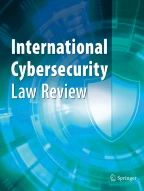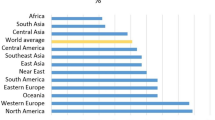
Legal harmonisation of cyber laws in the Association of Southeast Asian Nations (ASEAN) is necessary to combat the transnational nature of cybercrimes. However, this is a difficult task in ASEAN as it requires all ASEAN member states to agree on a uniform cybercrime regulatory framework. The rapid evolution of cybercrime also undermines the strength of a static convention. This leads to the following question: How can a harmonized regulatory framework that would efficiently tackle the rapid evolution of cybercrime be designed? Regrettably, the Budapest Convention failed to facilitate the legal harmonisation in ASEAN with its inability to reach universal consensus. This paper argues that a regional cybercrime court, namely the ASEAN Cybercrime Court, can be an alternative approach to achieving legal harmonisation with the prevalence of cybercrimes. The theoretical framework of this paper is based on the concept of international common law articulated by Andrew Guzman and Timothy Meyer, in which certain members unable to agree on a broad agreement can instead agree to shallow rules to create an institution with authority to promulgate rules. In effect, it reduces the transaction costs for reaching a consensus. This paper also analyses the feasibility and merit of the creation of the ASEAN Cybercrime Court from three aspects: the jurisdiction, the existence of an independent prosecutorʼs office and the legal interpretation. Although the solution is not a perfect answer to legal harmonisation, it serves as a starting point on a path to progress ultimately leading to the conclusion of a binding multilateral treaty.
This is a preview of subscription content, log in via an institution to check access.
Price includes VAT (France)
Instant access to the full article PDF.
Rent this article via DeepDyve

United Nations Office on Drugs and Crime (UNODC), ‘Darknet Cybercrime Threats to Southeast Asia 2020’ (2021) accessed 1 October 2022, 5.
Interpol, ‘ASEAN Cyberthreat Assessment 2021’ (22 January 2021) accessed 18 September 2022 (hereinafter “Interpol’s Report”) 13.
Simon Kemp, ‘Digital 2020: Global Digital Overview’ (DataReportal, 30 January 2020) accessed 27 September 2022; Interpol’s Report (n 4) 8.
Enno Hinz, ‘Cambodia: Human trafficking crisis driven by cyberscams’ (Deutsche Welle, 12 September 2022) accessed 29 September 2022.
The Associated Press, ‘24 more Malaysians rescued from Cambodia human traffickers’ (ABC News, 9 September 2022) accessed 29 September 2022.
ASEAN, ‘ASEAN Protocol on Enhanced Dispute Settlement Mechanism’ (2012) accessed 30 September 2022.
Nicohlas W. Cade, ‘An Adaptive Approach for an Evolving Crime: The Case for an International Cyber Court and Penal Code’ (2012) 37(3) Brooklyn J Int’l L 1139, 1147-1148.
Filippo Spiezia, ‘International cooperation and protection of victims in cyberspace: welcoming Protocol II to the Budapest Convention on Cybercrime’ (2022) 23(1) ERA Forum 101, 102.
Alexandra Perloff-Giles, ‘Transnational Cyber Offenses: Overcoming Jurisdictional Challenges’ (2018) 43 Yale J Int’l L 191, 204.
Spiezia (n 16) 103.Jonathan Clough, ‘A World of Difference: The Budapest Convention on Cybercrime and the Challenges of Harmonisation’ (2nd International Serious and Organised Crime Conference, Brisbane, July 2013) 698, 701.
ASEAN, ASEAN Documents Series on Transnational Crime: Terrorism and Violent Extremism; Drugs; Cybercrime; and Trafficking in Persons (Jakarta: ASEAN Secretariat 2017).
Hitoshi Nasu and others, The Legal Authority of ASEAN as a Security Institution (CUP 2019) 143.Iqbal Ramadhan, ‘ASEAN Consensus and Forming Cybersecurity Regulation in Southeast Asia’ (the 1st International Conference on Contemporary Risk Studies, Jakarta, March-April 2022) 2.
ASEAN Declaration to Prevent and Combat Cybercrime (adopted 13 November 2017).ASEAN Convention Against Trafficking in Person, Especially Women and Children (adopted 23 November 2015).
Andrew T. Guzman, ‘Against Consent’ (2012) 52 Virginal J Int’l L 747, 764. Cade (n 15) 1139.Europol and Eurojust Public Information, ‘Common challenges in combating cybercrime’ (2019) accessed 10 September 2022, 12.
ASEAN-Australia Counter Trafficking, ‘The use and abuse of technology in human trafficking in Southeast Asia’ (30 July 2022) accessed 1 October 2022.
Ralf Emmers, ‘ASEAN minus X: Should This Formula Be Extended?’ (2017) RSIS Commentary Nanyang Technology University accessed 10 October 2022. Clough (n 20) 700. The Budapest Convention on Cybercrime (signed 23 November 2001) TIAS 131, ETS 185. ibid Preamble.
Council of Europe Cybercrime Division DGI, ‘Joining the Convention on Cybercrime: Benefits’ (16 June 2022) accessed 9 September 2022.
Eugenio Benincasa, ‘The role of regional organizations in building cyber resilience: ASEAN and the EU’ Pacific Forum Issues & Insights Vol. 20, WP 3 6/2020, 1 accessed 9 September 2022.
Hanan Mohamed Ali, ‘“Norm Subsidiarity” or “Norm Diffusion”? A Cross-Regional Examination of Norms in ASEAN-GCC Cybersecurity Governance’ (2021) 4(1) The Journal of Intelligence, Conflict, and Warfare 123, 127.
Gabey Goh, ‘Cybercrime: Malaysia not lagging but needs to level up’ (Digital News Asia, 24 September 2014) accessed 11 September 2022.
Guzman (n 26) 756–757.Russia & FSU, ‘Russia prepares new UN anti-cybercrime convention-report’ (RT, 14 April 2017) accessed 5 October 2022.
UNGA ‘Letter dated 11 October 2017 from the Permanent Representative of the Russian Federation to the United Nations addressed to the Secretary-General’ (16 October 2017) UN Doc (A/C.3/72/12).
Guzman (n 26) 759. Benincasa (n 36) 1.Marco Gercke, ‘10 years Convention on Cybercrime: Achievements and Failures of the Council of Europe’s Instrument in the Fight against Internet-related Crimes’ (2011) 12(5) Computer Law Review International 142; Stein Schjolberg, ‘The History of Cybercrime’ (2020) 13 Schriftenreihe des Cybercrime Research Institute 96.
Cade (n 15) 1155. Cade (n 15) 1155.Andrew T. Guzman & Timothy L. Meyer, ‘International Soft Law’ (2010) 2(1) Journal of Legal Analysis 171, 182.
Clough (n 20) 700.Andrew T. Guzman & Timothy L. Meyer, ‘Explaining Soft Law’ (Latin American and Caribbean Law and Economics Association (ALACDE) Annual Papers, UC Berkeley, 2010).
Judge Stein Schjolberg, ‘Peace and Justice in Cyberspace: Potential new global legal mechanisms against global cyberattacks and other global cybercrimes’ (EWI Worldwide Cybersecurity Summit Special Interest Seminar, New Delhi, October 2012) 6.
Guzman & Meyer (n 51) 171. The ASEAN Declaration (Bangkok Declaration) (signed 8 August 1967). Guzman (n 26) 761–762. Guzman & Meyer (n 51) 202.Alan Boyle, ‘Soft Law in International Law-Making’ in Malcolm D. Evans (ed) International Law (OUP 2018) 119.
Nicaragua v United States of America (Merits) ICJ Rep 1986. Guzman & Meyer (n 51) 202–203. Nasu (n 22) 151. Clough (n 20) 701.Visoot Tuvayanond, ‘The Role of the Rule of Law, the Legal Approximation and the National Judiciary in ASEAN Integration’ (2001) 6(1) Thammasat Review 74, 82.
Boyle (n 63) 123. Universal Declaration of Human Rights (adopted on 10 December 1948). Guzman (n 26) 781.International Criminal Tribunal for the former Yugoslavia, ‘Overview of Capacity Building Activities’ accessed 26 September 2022.
Judge Stein Schjolberg, ‘Recommendations for potential new global legal mechanisms against global cyberattacks and other global cybercrimes’ EWI Cybercrime Legal Working Group 3/2012, 17.
Benincasa (n 36) 2. ASEAN Declaration to Prevent and Combat Cybercrime (n 22).Usanee Aimsiranun, ‘Comparative Study on the Legal Framework on General Differentiated Integration Mechanisms in the European Union, APEC, and ASEAN’ (2020) ADBI Working Paper 1107 (Tokyo: Asian Development Bank Institute) 5.
Ramadhan (n 23). Nasu (n 22) 158.Robert Cryer and others, An Introduction to International Criminal Law and Procedure (4th edn, CUP 2019) 57.
Kuala Lumpur Declaration Combating Transitional Crime, Kuala Lumpur, Malaysia (signed on 30 September 2015).
ASEAN Declaration to Prevent and Combat Cybercrime (n 22).Memorandum of Understanding between ASEAN and the Government of the People’s Republic of China on Cooperation in the Field of Non-Traditional Security Issues, Manila, Philippines (signed on 21 September 2017).
Joint Statement of the Fourth ASEAN Plus China Ministerial Meeting on Transnational Crime Consultation (30 September 2015).
Cade (n 15) 20.Daniel, T. Ntanda Nsereko, ‘The International Criminal Court: Jurisdictional and Related Issues’ (1999) 10 Criminal Law Forum 87, 120.
A. Hays Butler, ‘The Doctrine of Universal Jurisdiction: A Review of the Literature’ (2000) 11(3) Criminal Law Forum 353, 354.
Geneva Convention I (12 August 1949) art 49. George Fletcher, ‘Against Universal Jurisdiction’ (2003) 1 JICJ 580. Perloff-Giles (n 17) 224. Benincasa (n 36) 9. Schjolberg (n 55) 20.International Criminal Court, ‘Office of the Prosecutor’ accessed 1 October 2022. Guzman & Meyer (n 51) 204. Cade (n 15) 1170. Cryer (n 87) 483.
International Criminal Court, ‘Asia-Pacific States | International Criminal Court’ < https://asp.icc-cpi.int/states-parties/asian-states> accessed 24 October 2023.
Boyle (n 63) 118. Guzman & Meyer (n 51) 205.This paper was presented at the “Legal Co-operation, Harmonisation and Unification: An ASEAN Perspective” Conference. For their discussions, comments and suggestions, the authors thank the participants of the ‘Legal Cooperation, Harmonization and Unification: An ASEAN Perspective’ Conference organised by the Asian Law Centre, Melbourne Law School, The University of Melbourne; Faculty of Law, Surabaya University; School of Law, Vietnam National University Hanoi; and the International Organization of Educators and Researchers Inc. (IOER).